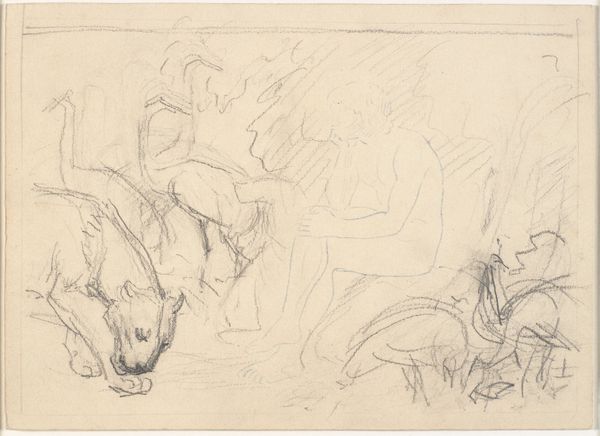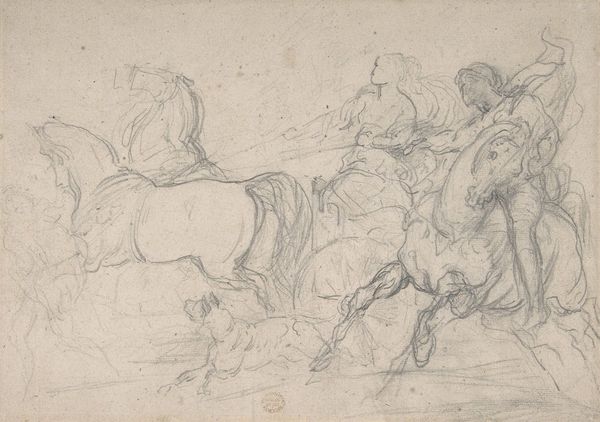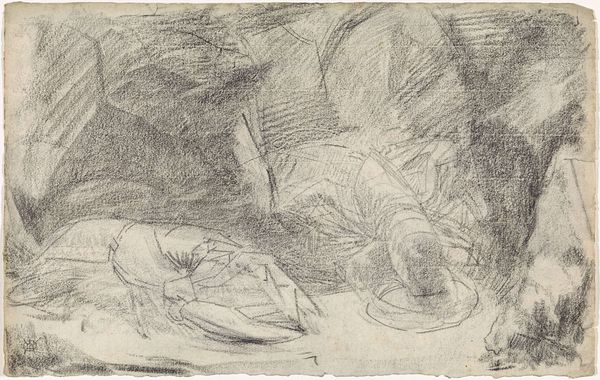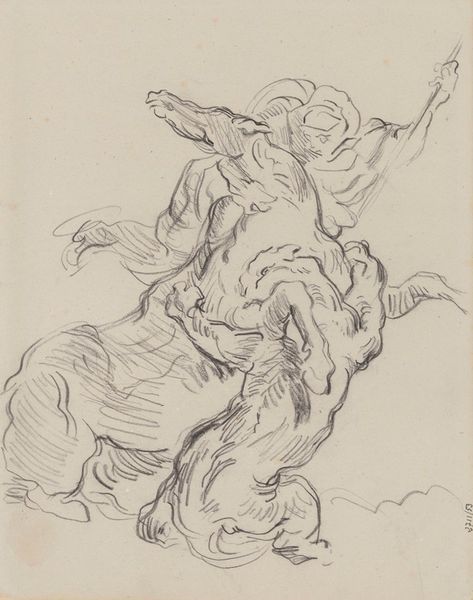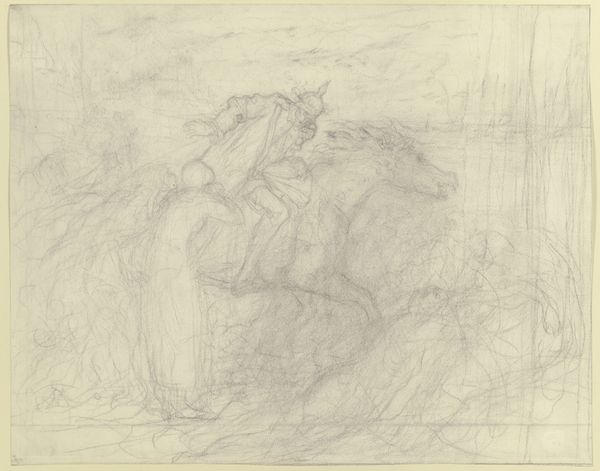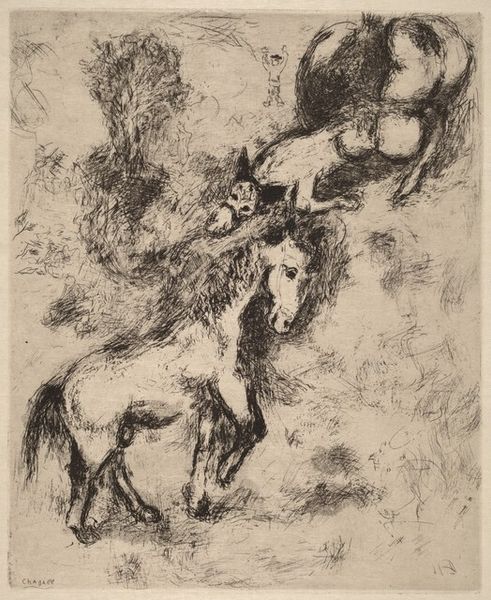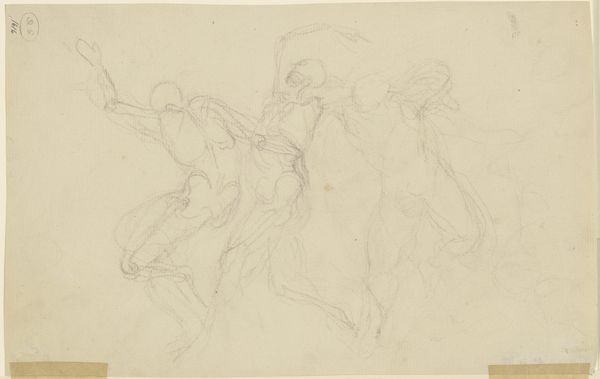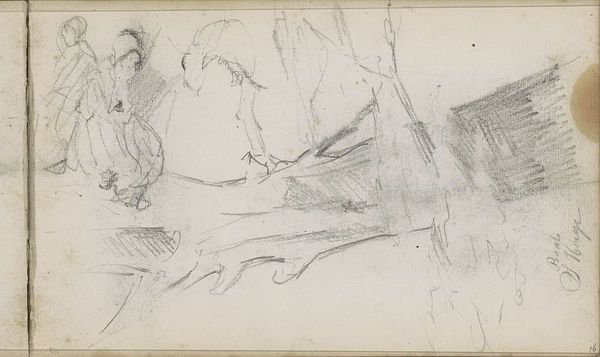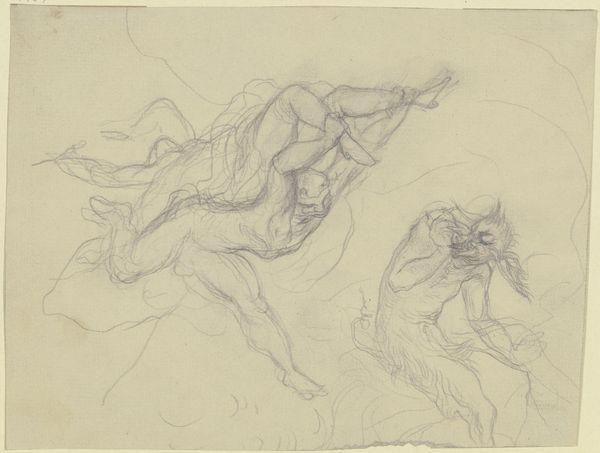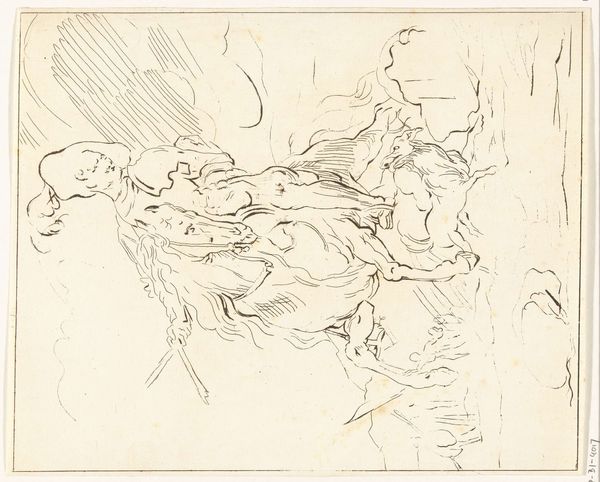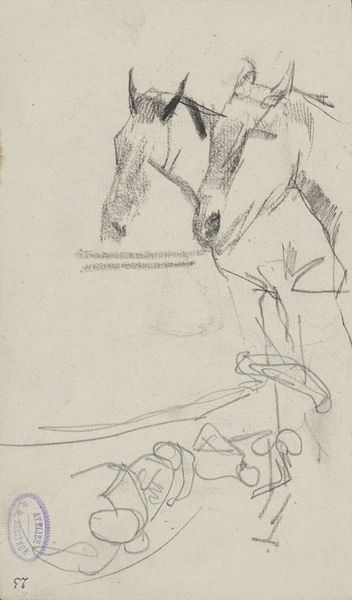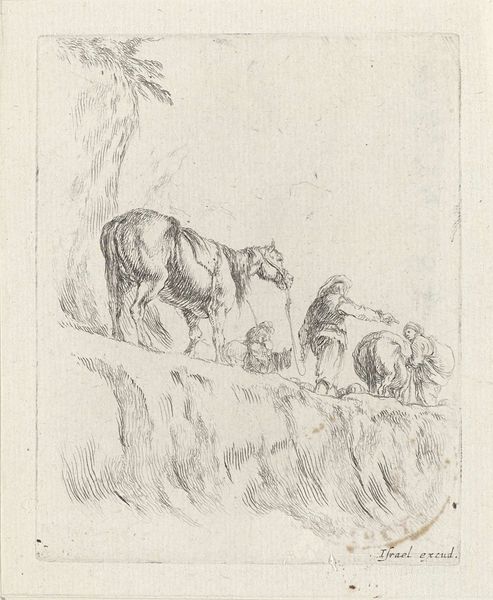
drawing, pencil
#
drawing
#
toned paper
#
light pencil work
#
baroque
#
pen sketch
#
pencil sketch
#
figuration
#
personal sketchbook
#
ink drawing experimentation
#
pen-ink sketch
#
pencil
#
pen work
#
sketchbook drawing
#
history-painting
#
sketchbook art
Dimensions: height 310 mm, width 196 mm
Copyright: Rijks Museum: Open Domain
Curator: Here we have "The Conversion of Saul" by Pieter Fransz. de Grebber, a pen and pencil drawing done on toned paper sometime between 1610 and 1652. What are your initial impressions? Editor: It strikes me as chaotic, yet incredibly dynamic. A swirling mess of figures, a powerful horse rearing back, all rendered in this almost frenzied, scribbled energy. It feels very raw, like a sudden, overwhelming experience caught on paper. Curator: Precisely. The immediacy is remarkable. The scene depicts Saul’s dramatic downfall on the road to Damascus, as recounted in the Book of Acts. He’s being thrown from his horse, blinded by a divine light. You can almost feel the shock. Editor: That bolt of light! The way the artist used these slashing lines creates the presence of some divine power that strikes at the ego itself. Think of how many images of horses we've had and this scene uses a falling horse and rider to symbolize loss of control! What was de Grebber hoping to achieve? Curator: It’s believed this is a study for a larger painting. De Grebber, influenced by both Italian Baroque and Dutch Classicism, uses the pen and pencil here to explore composition and form before committing to paint. Note the faces; look closely at the horse and its fallen rider. What I appreciate is that lack of perfection. This is the initial stab, where what he gets is an insight into form. Editor: I see the faces contorted in distress, surprise or fear. He's really capturing the raw emotional upheaval. Are there other symbols or imagery, hidden or not, worth thinking about? Curator: Beyond the obvious symbolism of light representing divine intervention and Saul's fall from his horse as a symbolic humbling, look at the positioning of the figures. The eye is drawn upwards towards the light and then brought back down to the crumpled figure of Saul. He’s literally and figuratively at the bottom of the composition at this moment, on his path to enlightenment. Editor: It’s fascinating to consider this a preparatory work, it possesses an expressive energy. There's this feeling, that captures something essential, of personal transformation, and, more so, to question authority that I can appreciate here. It is what makes it linger in your imagination.
Comments
No comments
Be the first to comment and join the conversation on the ultimate creative platform.
